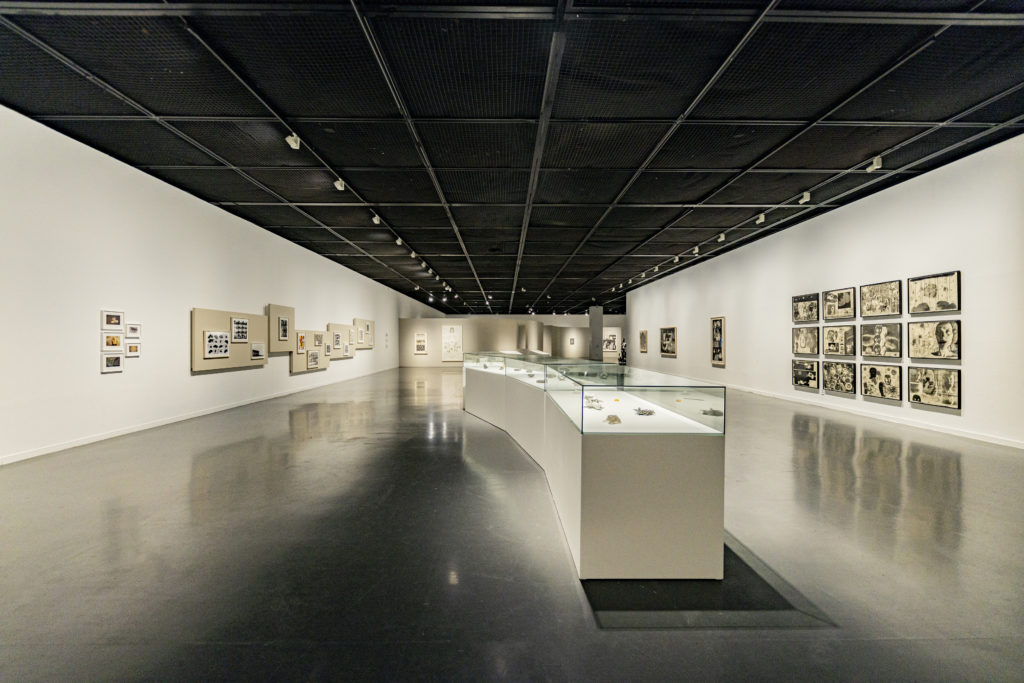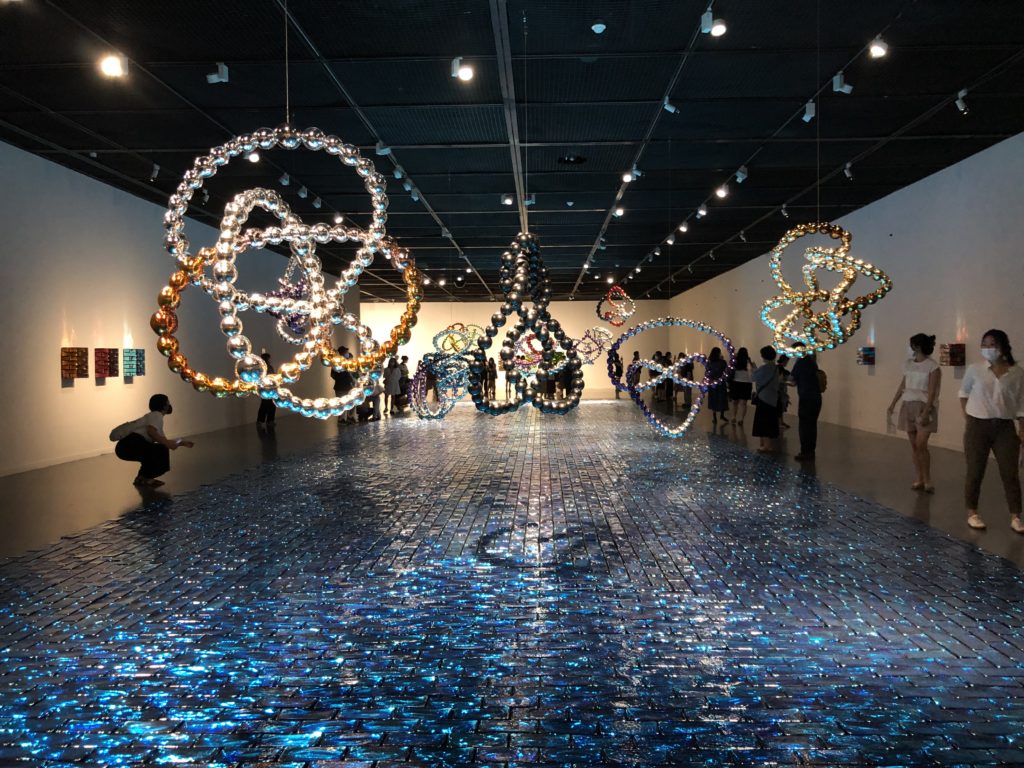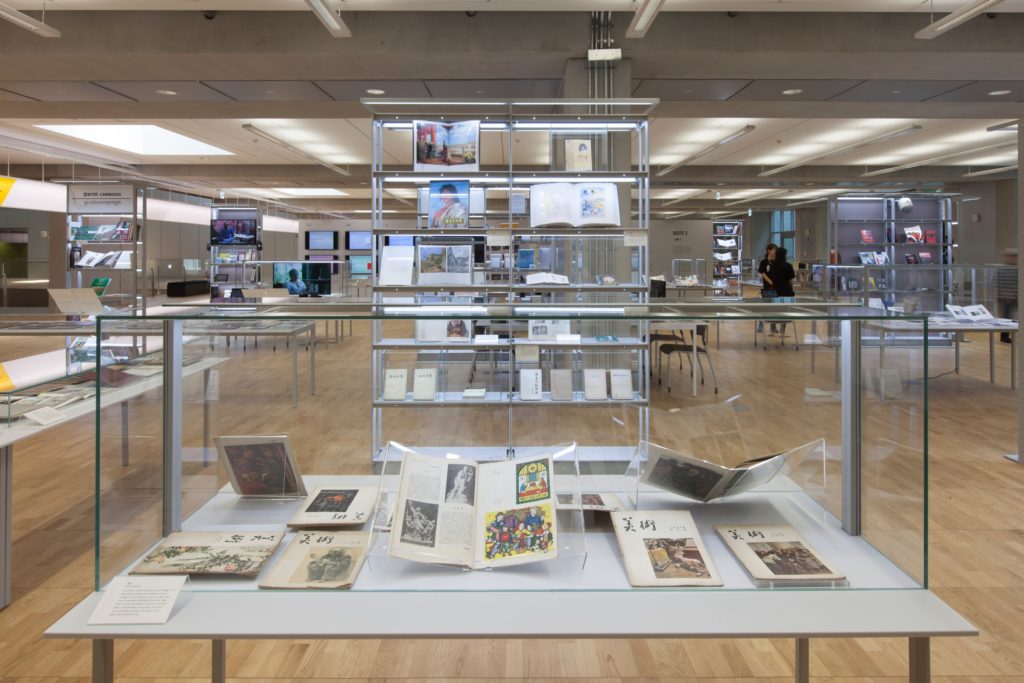ACA project a eu la chance de s’entretenir avec Wonseok Koh, curateur indépendant, au sortir de ses fonctions de curateur en chef du SeMA (Seoul Museum of Art). Tout juste revenu du Kazakhstan où il a curaté une exposition d’Oksun Kim, Wonseok Koh, figure majeure de la scène artistique en Corée, évoque avec Erwan Jambet son parcours curatorial, le regard qu’il porte sur la scène artistique contemporaine et sa diversité, et l’histoire de l’art contemporain en Corée.
ACA project had the chance to speak with independent curator Wonseok Koh right after the end of his contract at SeMA (Seoul Museum of Art), where he was the Chief Curator. Having just returned from Kazakhstan where he curated a Oksun Kim solo exhibition, Wonseok Koh, a leading figure in the Korean art scene, evokes with Erwan Jambet his curatorial career, his view of the contemporary art scene and its diversity, and the history of contemporary art in Korea.

Pourriez-vous vous présenter et nous parler de votre lien avec la scène artistique contemporaine en Corée ?
Je m’appelle Wonseok Koh, et j’ai été conservateur en chef du SeMA (Seoul Museum of Art) pendant cinq ans. J’ai été diplômé d’une école de commerce en 1998, puis j’ai soudainement eu envie de me réorienter vers les arts : il y a beaucoup d’artistes dans ma famille, et je me suis toujours senti attiré par l’art. J’ai démissionné, repris des études à Séoul, et je me suis spécialisé en management culturel avant de rejoindre une galerie d’art en 2001. J’ai ensuite travaillé dans diverses institutions, principalement sur des projets à but non lucratif, la plupart du temps pour des musées comme l’Arko Art Center à Séoul, le Busan Museum of Art ou le SeMA. Entre 2004 et 2007, j’ai également travaillé chez Laurence Geoffrey’s Ltd. C’est à cette époque que j’ai eu l’occasion de travailler sur beaucoup de projets internationaux.
Could you briefly introduce yourself and how you are related to the contemporary art scene in Korea?
My name is Wonseok Koh, and I was the Chief Curator of SeMA (Seoul Museum of Art) for five years. I graduated in 1998 and majored in Business Management. Then suddenly, I wanted to change my field to the arts, because I have many artists among my family members and I always felt close to the arts. I quit my job, went to graduate school in Seoul and majored in arts management. At the end of 2001, I joined a commercial gallery. From then I have worked in various institutions, mostly focusing on non-profit projects, most of the time with museums such as Arko Art Center in Seoul, Busan Museum of Art and SeMA. From 2004 to 2007, I also worked at Laurence Geoffrey’s Ltd: that was when I experienced working on many international projects.
Vous avez récemment curaté une exposition personnelle de la photographe coréenne Oksun Kim intitulée « The Story of You and Me » au Musée national des arts de la République du Kazakhstan. Oksun Kim s’intéresse dans son travail à l’enchevêtrement entre les micro-histoires de migrant·es, leurs expériences individuelles, et la macro-Histoire, en abordant des thématiques telles que les échanges interculturels, l’homogénéité, la diversité et les luttes pour l’intégration, ainsi que la relation que la Corée entretient vis-à-vis du monde extérieur et de sa propre histoire. Comment est né ce projet, et quelle importance revêtait-il pour vous ?
La première exposition personnelle d’Oksun Kim que j’ai vue remonte à 2002. C’était « Happy Together », à l’espace alternatif Pool. J’avais vraiment été très impressionné. Puis à l’été 2004, j’ai eu la chance d’être commissaire d’une exposition à New York, lorsque Oksun Kim était en résidence d’artiste à PS1, nous nous sommes donc souvent vus à New York. Lorsque j’ai été choisi pour curater une exposition au Kazakhstan par le KOFICE – un des organismes du ministère de la Culture, des Sports et du Tourisme dédié aux échanges culturels internationaux – ils m’ont donné carte blanche dans le choix du thème et de l’artiste.
Your latest project is a solo show by Korean photographer Oksun Kim entitled “The Story of You and Me” at the State Museum of Arts of the Republic of Kazakhstan. Oksun Kim’s work focuses on intertwining micro-stories of migrants and their individual experiences with macro-history, delving into issues such as cultural exchanges, homogeneity, diversity and the struggle to integrate, and Korea’s relationship with the outside world and its own history. How did this project come along, and why was this an important project for you?
The first solo show of Oksun Kim that I saw was in 2002, a long time ago. The show was “Happy Together” in the alternative space Pool, and it was a very impressive show. Then in the summer of 2004, I had the chance to curate an exhibition in New York and at that time Oksun Kim was in the PS1 Artist Residency, so we often met in New York. When I was chosen to curate an exhibition in Kazakhstan by KOFICE – one of the institutions under the Ministry of Culture, Sports and Tourism that mainly focuses on international cultural exchanges – they gave me the freedom to set up the themes and choose the artist.

Vous aviez donc un contrôle total sur la curation ?
Oui, ce qui est plutôt une chance. Ça paraît fondamental, mais ce n’est pas toujours le cas. Au début, j’avais imaginé une exposition collective de six artistes, dont Oksun Kim, autour d’histoires de migrations et de l’Histoire. Finalement, j’ai réalisé qu’une exposition collective serait un peu trop lourde, et j’ai décidé de me focaliser sur une exposition personnelle qui pourrait aider le public kazakh à se concentrer plus facilement sur une artiste contemporaine unique.
Oksun Kim a toujours travaillé sur des portraits de personnes ayant un passé ou une expérience liée à la migration, certaines volontairement, d’autres pour d’autres raisons. J’ai beaucoup voyagé dans le monde, et le Kazakhstan est l’un des endroits les plus diversifiés que j’ai connu. Des personnes très différentes vivent ensemble, c’est un pays pluriethnique, international, les gens parlent plusieurs langues… c’est la raison pour laquelle j’ai choisi le travail d’Oksun Kim pour cette exposition.
So you had complete control over the curation?
Yes, which is quite lucky actually. It’s basic, but you know, it’s not always the case. At first I had imagined a six-artists group exhibition about migrant stories and macro-history, including Oksun Kim. In the end, I found that a group exhibition was a little too much for the size of the project, and decided that I was going to curate a solo exhibition to help Kazakh audiences focus more easily on one single contemporary artist.
Oksun Kim’s work has always consisted of portraits of people who have a background or an experience of migration, some of them voluntarily, some of them for any other reasons. I have been to many places in the world, and Kazakhstan is one of the most diverse places that I have experienced, with many kinds of people living together. It’s a multiracial, international place, people speak diverse languages… That’s why I chose Oksun Kim for this show.

Vous avez travaillé tout au long de votre carrière sur des projets internationaux. En tant que curateur en chef du SeMA notamment, vous avez instauré un dialogue entre de jeunes artistes coréens (comme Choi Haneyl, Hannah Woo ou Jihyun Jung) et des artistes internationaux de référence. Souhaitiez-vous créer des ponts entre artistes émergents et plus confirmés, entre les communautés artistiques coréennes et internationales ?
Avant que je ne rejoigne le SeMA, le musée organisait peu d’expositions individuelles, pour tout un ensemble de raisons, mais il était ouvert aux expositions collectives, et d’artistes étrangers. L’équipe curatoriale, moi y compris, a donc pensé qu’il était temps d’organiser plus d’expositions personnelles pour permettre aux visiteurs de mieux se plonger dans l’œuvre de tel ou tel artiste. C’est pour cela qu’il y eu un grand nombre d’expositions personnelles, d’artistes internationaux ou coréens : ce furent les premières expositions individuelles au SeMA, avec des artistes comme Kiki Smith ou Jean-Michel Othoniel, mais aussi Lee Bul, que tout le monde connaît bien évidemment, mais dont peu de gens ont réellement eu l’occasion de voir beaucoup de ses œuvres.
You have been working all along your career on international projects. As the Chief Curator of SeMA notably, you have installed a dialogue between young Korean artists (such as Choi Haneyl, Hannah Woo or Jihyun Jung) and blueprint international artists. I was wondering if this was the result of a will on your end to create bridges between emerging artists and more established ones, between the Korean and international art communities?
Before I joined SeMA, there weren’t many solo shows at the museum, for a lot of different reasons, but they were very open to group and foreign artists exhibitions. So the curatorial team, including me, thought that it was about time to host more solo shows, allowing audiences to delve more into individual artists’ works. That’s why there were a lot of solo shows, of international or Korean artists: it was the early age of solo shows at SeMA, with artists such as Kiki Smith or Jean-Michel Othoniel, and also Lee Bul, which we all know, but few of us have actually seen many of her works properly.

Lorsque vous étiez responsable des expositions, le SeMA a également organisé plusieurs expositions construites autour des archives du musée. Pensez-vous que les archives d’art coréennes ne sont pas suffisamment utilisées ?
L’archivage revêt une signification très différente en Corée ou dans les pays d’Asie de l’Est si l’on compare aux pays européens, car la plupart des pays d’Asie de l’Est ont souffert de la colonisation et des guerres civiles, des dictatures, de la lutte pour la démocratie, d’une croissance économique rapide, etc. Tout a changé très rapidement, et les traditions n’ont pas été préservées : tout fut mis en pause, puis soudain, la modernisation advint au travers de la colonisation. À cette époque, tout changeait rapidement, et nous n’avions ni le temps ni l’espace nécessaire pour archiver, les choses disparaissaient très facilement.
J’étais chef d’équipe pour le projet Library Park au ACC (Asian Culture Center) à Gwangju entre 2014 et 2015, au moment de l’ouverture d’ACC. Notre mission était de rassembler et classer des ressources sur les expositions, les arts vivants, l’architecture, dans les pays d’Asie de l’Est. Nous avions par exemple archivé les premiers films expérimentaux d’artistes des années 1960 au Japon, ou encore les archives d’expositions en Indonésie dans les années 1970 et 1980. C’était un travail important, et j’ai découvert que le manque d’archives n’est pas seulement un problème en Corée, mais aussi dans tous les pays d’Asie de l’Est.
Si l’on s’intéresse à l’art contemporain en Corée, la génération actuelle a été la première à comprendre l’art coréen dans son contexte historique. Avant cela, l’art coréen était uniquement considéré comme étant rattaché aux traditions asiatiques ou à une esthétique asiatique. Nous connaissons tous des noms comme Lee Bul, nous avons tous vu ses grandes installations dans des biennales, mais nous ne savons pas réellement comment et pourquoi Lee Bul est devenue une artiste si importante à l’international. Et pour comprendre son travail, il faut connaître ses premières œuvres, desquelles découle toute l’essence de son travail. C’est pourquoi les archives sont si importantes. Pour Lee Bul, beaucoup de vidéos [des performances de l’artiste] étaient dispersées dans le monde entier, il a donc fallu dans un premier temps rassembler toutes ces archives afin de pouvoir curater l’exposition.
While you were its Head of Exhibitions, SeMA also showed numerous exhibitions based on the museum’s archives. Do you think the art archives in Korea aren’t used enough?
The meaning of archives in Korea or in East-Asian countries is very different from that of European countries, because most East-Asian countries suffered from colonization and civil wars, dictatorships, struggle for democracy, rapid economic growth and so on. Everything was changing very rapidly, and we didn’t have time to keep traditions alive: everything was put to a stop, and suddenly modernization came through colonization. At that time, everything was rapidly growing and changing, and we didn’t have the time or place for archiving, things disappeared very easily.
I was the Team Manager for the Library Park at ACC (Asia Culture Center) in Gwangju from 2014 to 2015, when ACC opened. We were gathering and categorizing resources about exhibitions, performing arts, architecture, in East Asian countries. For example, we archived the first artists’ experimental films of the 1960s in Japan, or exhibition records in Indonesia in the 1970s and 1980s. It was really meaningful, and I found that the lack of archives is not only a problem in Korea, but also in all East Asian countries.
If we are focusing on contemporary art in Korea, the current generation was the first to understand Korean art in its historical context. Before that, Korean art was just understood as part of Asian traditions, or Asian aesthetics. We all know names like Lee Bul, we all have seen her big installations at biennales, but we don’t really know how and why Lee Bul became such an important artist internationally. And to understand her work, we have to know about her early works, from which the essence of her work is generated. That’s why archiving is important. For Lee Bul, a lot of videos [of her performances] were scattered in a lot of different places, so we had to gather all the archives first in order to be able to curate the show.

Que pensez-vous des opportunités qui existent actuellement pour les artistes et curateur·trices coréen·nes ?
La plupart des Européens et des Américains n’ont pas conscience du grand nombre d’artistes coréens qui sont actifs, ou du nombre de personnes qui travaillent dans l’art en Corée. La scène artistique était déjà très forte et indépendante au XXe siècle, ce qui est visible aujourd’hui n’est que la partie émergée de l’iceberg : l’art coréen commence à bénéficier d’une reconnaissance internationale, mais ce n’est que le début.
Dans un avenir proche, je pense que nous devrions nous débarrasser du qualificatif « coréen » lorsque nous parlons d’« art coréen », pour parler simplement d’art. En Corée, l’art est encore compris au travers d’un prisme national, mais au fond, les Coréens ne se soucient pas beaucoup de la nationalité. Il y a une contradiction : en politique, la nationalité coréenne importe beaucoup, mais dans l’art, les gens n’y prêtent pas vraiment attention. Je pense que les artistes coréens doivent avant tout être considérés comme faisant partie intégrante du monde de l’art contemporain. Nous devons aller vers plus de diversité, et ne pas nous cantonner à nous définir uniquement comme coréens.
What do you think of the current opportunities that exist for Korean artists and curators?
Most European or American people are not aware of how many Korean artists there are, and how many people are working in the arts in Korea. There was already a very strong and independent art scene in the 20th century. Now is just the tip of the iceberg, and Korean arts are starting to be known by international audiences, but it’s only the start.
In the near future, I think we have to get rid of “Korean” in the “Korean arts”, it should be just arts. In Korea, it’s still being categorized within the Korean context, but basically Korean people don’t care about nationality that much. There is a contradiction: in politics, there is a strong care for nationality, but in the arts people don’t like it. I think Korean artists should be understood as a part of the contemporary art world. We have to embrace more diversity, and we don’t want to define ourselves just as Korean.
Pour conclure, pourriez-vous nous présenter brièvement deux de vos artistes coréens préférés : un artiste émergent et un artiste confirmé ?
Parmi les artistes confirmés, j’aime le travail de Rim Dong-Sik. Sa pratique de l’archivisme et ses incroyables performances et toiles laissent entrevoir une pratique unique et vibrante durant toute sa vie. Pour ce qui est des artistes émergents, j’ai récemment apprécié les œuvres de Jungwoo Lee. Il maîtrise parfaitement les technologies liées à la réalité virtuelle dans l’industrie cinématographique, et il en découle une esthétique propre sur laquelle il base sa pratique.
To conclude, could you briefly introduce two of your favorite Korean artists: one young artist, and one more established?
Among the senior artists, I like Rim Dong-sik. I think we can see a trace of a very unique and vibrant art practice throughout his lifetime archiving and incredible performances and paintings. Among young artists, I recently liked the works of Jungwoo Lee. He is quite knowledgeable about the virtual reality technology regarding the film industry and practices a special esthetics based on it.
Entretien mené par Erwan Jambet – Janvier 2024, Corée du Sud
Interview by Erwan Jambet – January 2024, South Korea
ACA project est une association française dédiée à la promotion de la connaissance de l’art contemporain asiatique, en particulier l’art contemporain chinois, coréen, japonais et d’Asie du sud-est. Grâce à notre réseau de bénévoles et de partenaires, nous publions régulièrement une newsletter, des actualités, des interviews, une base de données, et organisons des événements principalement en ligne et à Paris. Si vous aimez nos articles et nos actions, n’hésitez pas à nous soutenir par un don ou à nous écrire.
ACA project is a French association dedicated to the promotion of the knowledge about Asian contemporary art, in particular Chinese, Korea, Japanese and South-East Asian art. Thanks to our network of volunteers and partners, we publish a bimonthly newsletter, as well as news, interviews and database, and we organise or take part in events mostly online or in Paris, France. If you like our articles and our actions, feel free to support us by making a donation or writing to us.
